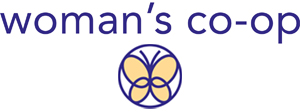Racial divides have persisted throughout history, deeply rooted in systemic inequalities that shape the social fabric of societies, particularly in the United States. These divides manifest differently among individuals, considering socioeconomic status. For many black individuals living in poverty, everyday challenges are compounded by systemic barriers. Research indicates that black households experience a higher poverty rate compared to their white counterparts, which perpetuates cycles of disadvantage and limits upward mobility. The racial divide between black and white individuals is a multifaceted issue influenced significantly by socioeconomic status.
Reverse racism – a term often used to describe perceived discrimination against members of a majority or historically dominant group – typically white individuals. This term is most often used to discuss affirmative action policies in education and employment. The concept is controversial. Critics argue that since historical and systemic racism has primarily disadvantaged people of color, claims of reverse racism fail to acknowledge the origins and implications of racism in society. I say that racism is a systemic issue, where power dynamics are crucial. In this view, the dominant racial group typically holds societal power, making it less plausible for “reverse racism” to exist in a systemic sense. However, in the case of our Co-op individual instances of bias or unfair treatment based on race do occur in both directions, and usually occurs when there a larger number of one or the other contained in the group setting. For this reason, I asked the building of trainees to write an opinion paper on the racial divides and where/why they see them occur. Because Woman’s Co-op believes that efforts to create inclusive environments benefit everyone. Encouraging dialogues about race and inclusion can help build understanding and empathy across differences and divides. Below are a few excerpts from those opinion papers:
Troy –
I don’t personally think at the Woman’s Co-op, the staff, or co-trainees are divided. I honestly feel like everyone equally have gotten to know each other, I just feel like some people have been around longer and some people know each other outside of the Co-op. I have never felt like it’s a racial thing. I feel like everyone bonds differently. But one thing I will say ever since I started working there everyone has been very respectful and nice. I feel like everyone gets along. And we all come together in a group when we need to.
Denisha –
When it comes to asking the question about people as a whole, weather it’s as a whole or divided. It could always go for a longer conversation. Because what divides people from each other could be looked at from multiple perspectives. It could be narrowed down political views, philosophies, faith, race, ethnicity, age, abilities, gender sexual orientation, and cultures to name a few. It could even be divided into the most important classes, upper class, middle class and lower class. Even though for me it doesn’t matter what class you are in and how much money you got, you’re still human at the end of the day. The lack of communication is what fails us.
Kelsy –
To me this is a tactic used by the devil. That is the devil’s main mission, to seek, kill and destroy. His number one goal is to divide us.
Rose –
Before coming to Calhoun County (Battle Creek) I had never experienced racial segregation. I grew up in a diverse family that never pointed out or spoke about our differences…to me, that’s because there weren’t any. Not until December 2023 did I realize skin color was still recognized and cared about in our society. I had been in an internship program with primarily black staff and students. A lot of cultural shock happened to me at this time as I started to realize just how different we truly are from each other. I found beauty and opportunity in this, a chance to expand my knowledge of culture right in my community. Those around me were not on the same page. I began to be pushed back not only from a social standpoint but in a professional manner as well. I was handed messily tasks, left out of events, put behind the camera, blamed for things outside of my control, denied a safe place for my belongings, ignored when in need of guidance, ridiculed and mocked just for who I was as a white woman. The lists goes on, regardless, I continued to fill my responsibilities and work hard to go above and beyond. When all was said and done, they “forgot” to add me to the slide show presentation and call my name during graduation.
After some studying, it’s been brought to my attention that there is still a lot of pull toward white supremacy. I couldn’t imagine that struggle for a person of color. However, I can resonate and empathize with the feeling of living in a world that is working against you. Growing up in poverty with a single mom who suffered from substance abuse and dealing with mental health issues myself, I feel I’ve faced a lot of those same battles one might endure from being subjected to suppression. By no means am I trying to compare the two. I just don’t believe in allowing that lack of opportunity to divide us. How do we expect change when we give in, laying bricks on the wall we are upset the government has built?
In conclusion, segregation still exists all around us. It starts with governmental policies and racial hierarchy and continues through our community as people become bitter and separate themselves in rebellion. This is what the people in charge are striving for. It’s up to us to make the choice to allow it or stand as one to make the change.
